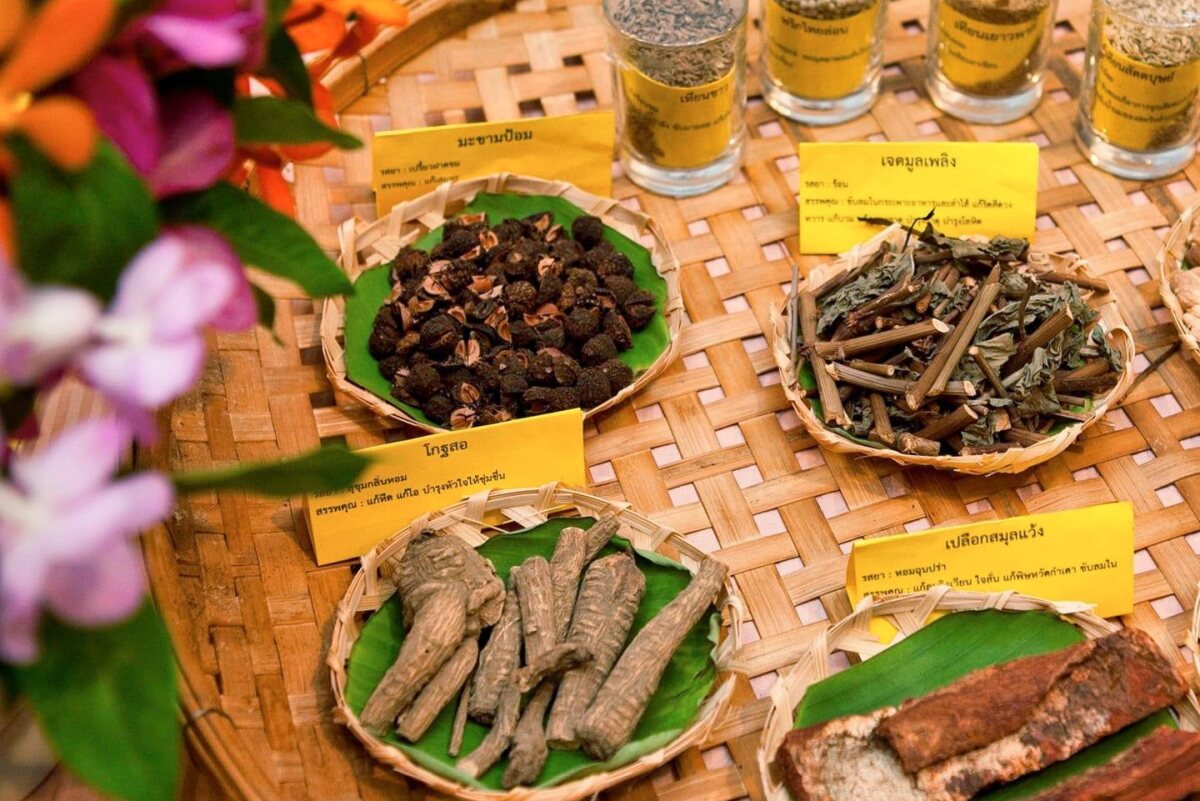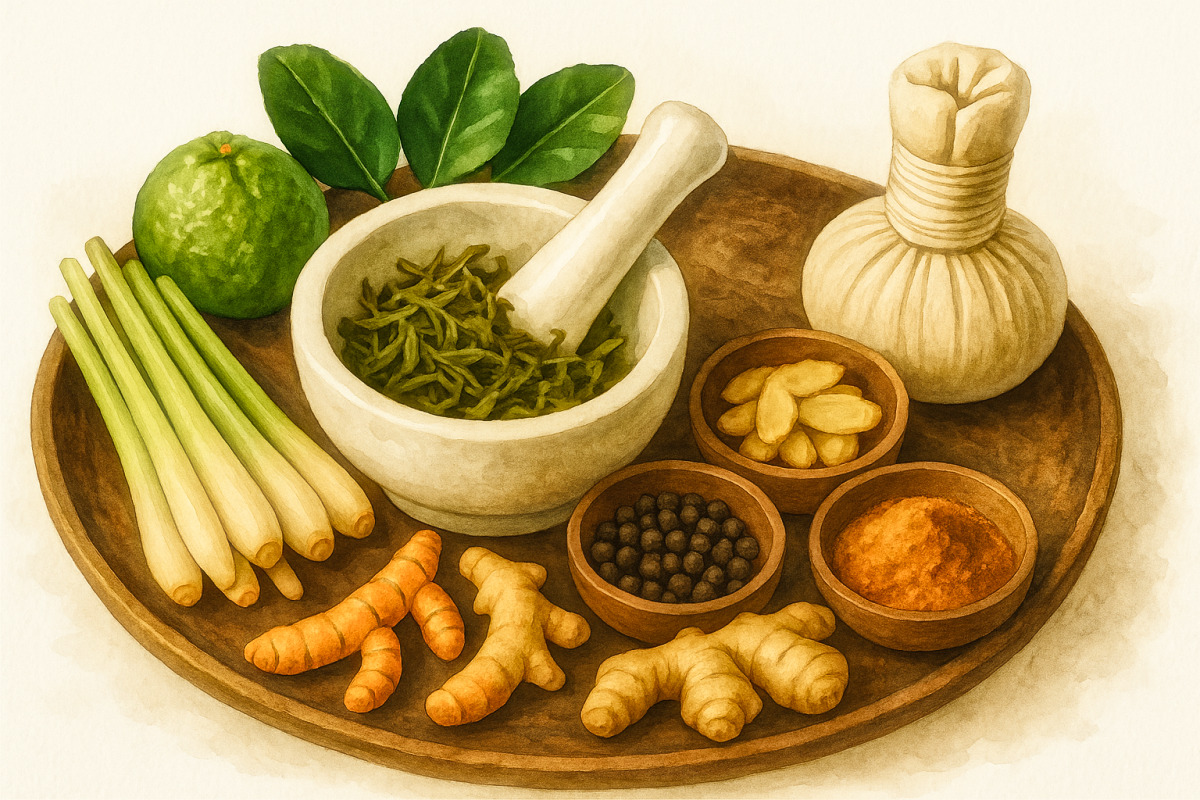In Thai Traditional Medicine, each plant, herb, animal product or mineral is classified into one of nine taste categories, each with its own distinct properties. Even if you are unfamiliar with a particular plant, tasting it can help you understand some of its characteristics. The nine tastes are:
Astringent
Astringent tastes are used to treat internal and external wounds, dysentery, diarrhea, and skin infections. However, they should be avoided in cases of cough, constipation, wind disorders, or imbalanced fire element. Examples of astringent taste are pomegranate, guava, green banana, and mangosteen peel.
Sweet
Sweet-tasting herbs help nourish the flesh, muscles, and heart, stimulate the appetite, and relieve fatigue and dry cough. However, they are not suitable for people with tooth decay, excess phlegm, vomiting, diabetes, dirty lymph, or wounds. Examples are safflower, sugarcane, licorice, and coconut water.
Nauseating/Intoxicating
Herbs with a nauseating/intoxicating flavor act as antidotes to various poisons, including phlegm and blood toxins and insect stings. They are effective in treating conditions related to the Water element, parasites, and rashes. However, they should be avoided by those with heart abnormalities or a cough. Examples are kratom, cannabis, and thorn apple seeds.
Bitter
Bitter herbs help treat conditions involving the blood, bile, and fever. They promote bile production, improve appetite, and aid digestion. However, they are not recommended for individuals with heart abnormalities, wind-related ailments, or bloating. Examples are bitter gourd, pea eggplant, and Fah Talai Jon.
Hot and Spicy
They help eliminate gas, reduce bloating, nourish the fire element, promote sweating, and support digestion. However, they should be avoided when experiencing a fever. Examples are nutmeg, cardamom, clove, and ginger.
Fatty and Rich
These herbs nourish the ligaments, tendons, joints, and bone marrow. They also relieve muscle aches, promote longevity, and provide warmth. However, they are not recommended for individuals with phlegm problems such as coughing, asthma, dysentery, fever, or dehydration. Examples are sesame seed, pumpkin seed, pea, cashew, and goat milk.
Fragrant and Cooling
These herbs support the heart, liver, and lungs, and nourish during pregnancy. They help restore energy, quench thirst, and reduce heat toxins. However, they should be used with caution by those with digestive wind problems such as bloating. Examples are saffron, pandan, jasmine, and lotus stamen.
Salty
Salty herbs are absorbed through the skin and help treat skin diseases and constipation. They help cleanse the lymph, intestines, blood, and thick phlegm. However, they should be avoided in cases of abnormal stool, dysentery, or stomach ulcers. Examples are fingerroot leaf, shallot leaf, salt, and sea shells.
Sour
Sour herbs and fruits are used for phlegm abnormalities, thick phlegm, cough, and constipation. They purify the blood and relieve thirst. However, they may aggravate dirty lymphatic conditions, diarrhea, or fever. There is a saying: If you know how to use this taste, it will be beneficial. If you don’t, it will be harmful. Examples are lime, pomelo, kaffir lime, and tamarind.
In addition to the nine main tastes, Thai medicine also recognizes a bland taste. Herbs with this taste help with phlegm issues, act as diuretics, and help reduce fever, aches and pains, and excess fire element. Bland taste has no contraindications. Examples are ivy gourd, morning glory, Ya Nang, and Indian marsh fleabane.
The nine tastes in Thai Traditional Medicine can help guide you in choosing foods to improve your health. Sometimes, we follow trends or advice that don’t suit our bodies. Understanding each taste helps you select foods and herbs that support your well-being based on your individual needs.




